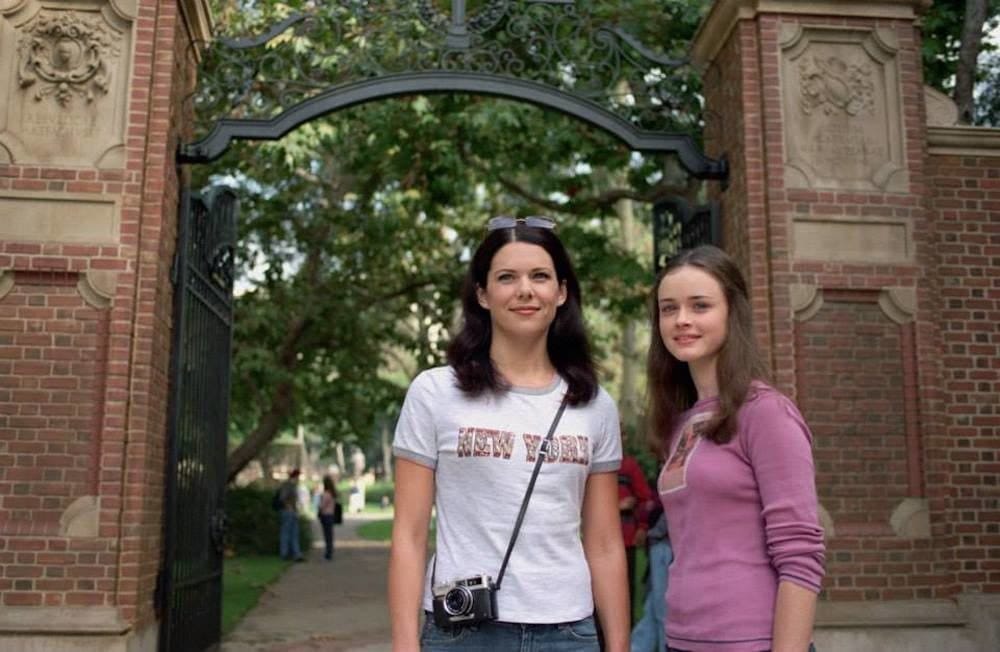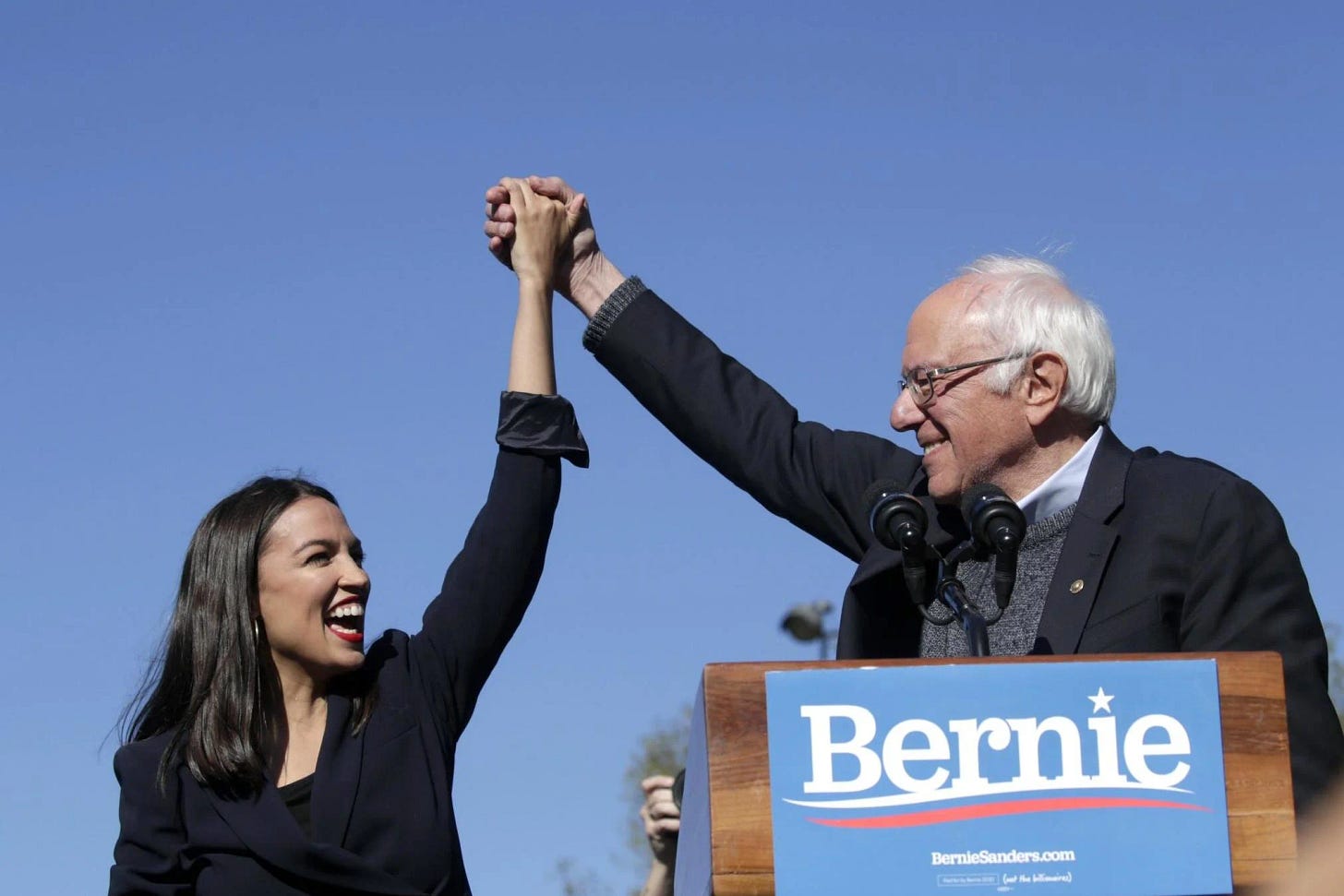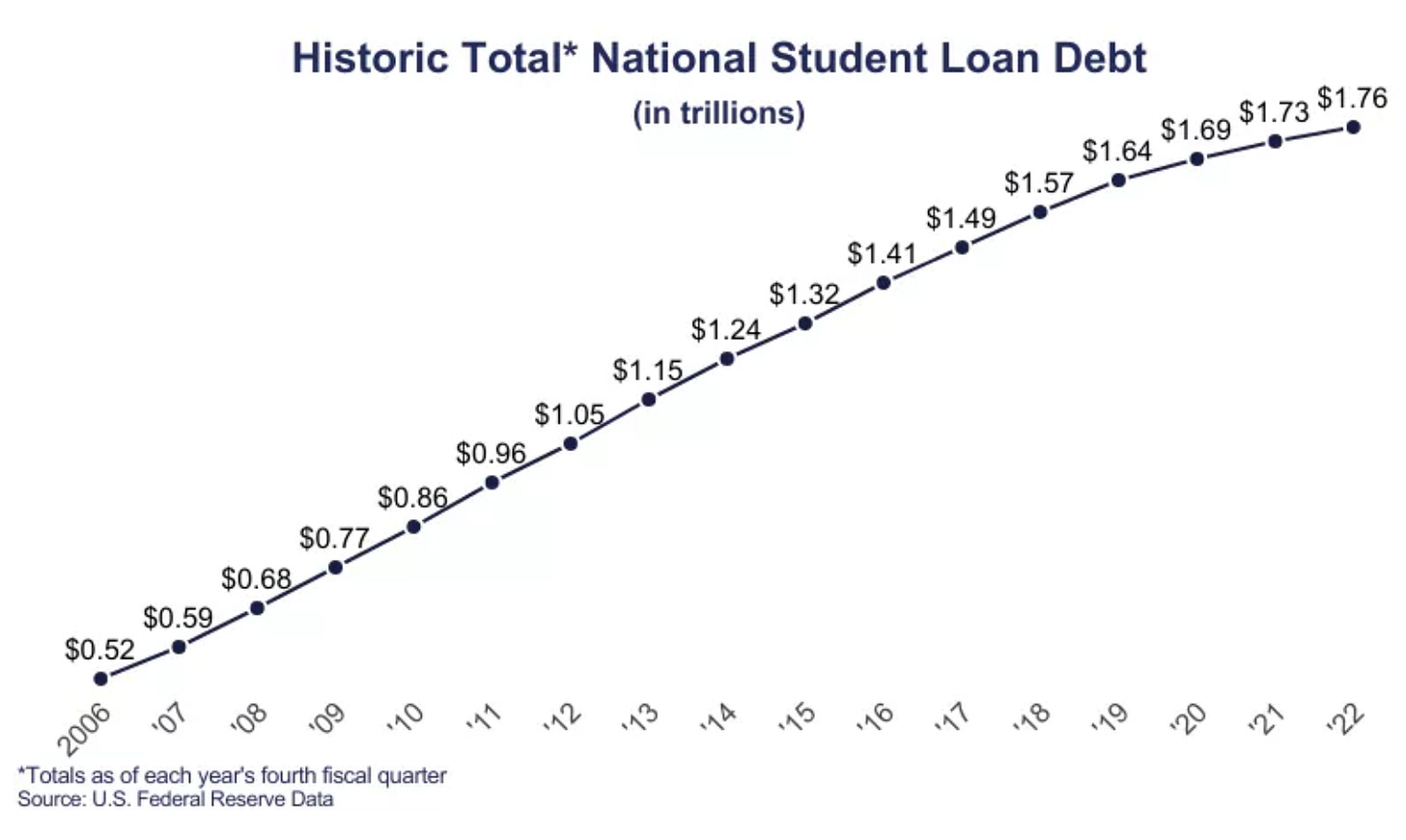If you’re a person carrying student debt around in your back pocket, or even if you’re not, you know that loan forgiveness is on everyone’s radar right now. Thanks to a recent decision made by our dear Supreme Court, our first chance at debt relief has been taken off the table. This has gotten me thinking about the education system and its functionality. Is this the best week can do?
Answer: no. We can definitely do better. In fact, we have done better. This may be one of those situations where we should look to the past as inspiration for the future. Go on a journey with me.1
Another question, did state universities always charge tuition? Again, we answer no. I had no idea that this was the case until a few weeks ago. Up until the 1960s, state universities were tuition-free. Even private universities were inexpensive at this point, until there were changes on the social and legislative level that ended the era of free tuition and began the student loan crisis.
What else do we know about this era? The civil rights movements that we view as synonymous with the 1960s ushered in things like Black and Chicanx studies and departments. If there’s one thing I’ve learned about the history of America, it’s that there is a lot of fear and resistance when it comes to the introduction of non-White education.
Another notable moment in history, the election of California governor Ronald Reagan in 1966. He was quick to propose that the University of California should charge tuition to attend college. His reasoning? To get rid of the undesirables. This was his not-so-subtle way of maintaining white supremacy by making education harder to access for people of color. By the 1990s, every “formerly public” school began to be paid for by tuition costs. This turned into the student debt we see today.
From 1964 to 2019, tuition costs soared by 3,819%. Thanks Ron.
Over the last few decades, the cost of a college education has steadily increased. Tuition at a public four-year college went from around $4,000 to nearly $11,000. At private institutions, we’re looking at numbers closer to $19,000 and $39,000. In the United States, we have $1.75 trillion total in student loan debt. That is astronomical.
While we do still have politicians that advocate for “Reagan-onmics,” we also politicians proposing college for all. Bernie Sanders, an Independent Vermont senator, has been working towards affordable and accessible education since 2017. In June of this year, he introduced a bill to make community college free by taxing Wall Street. And he’s not the only one.
Alexandra Ocasio-Cortez, a Democratic Congresswoman in New York, has been very vocal about her feelings toward the recent decisions on student debt relief. If she had it her way, she would see student debt completely erased across the country.
It’s comforting for me to see people in office fighting for fair and accessible education. I share their belief that education is a right, not a commodity.
The fact that our president even introduced the idea of student loan forgiveness is truly historical. Hopefully the next election cycle will bring more progressive politicians to office that will support future steps forward.
This is your reminder to make sure you’re registered to vote. Elections do matter, and every vote does make a difference.2
What are your thoughts on the education system in America? How do you feel about the SCOTUS decision to take debt forgiveness off the table? Let me know. I’m always down to talk politics with open-minded individuals. Sorry for making this week’s letter so political, but y’all knew it was going to happen eventually.
Talk to you soon,
Lucy
Please note that I’m still learning every day when it comes to the world of American politics. I do my research, but I also make mistakes. If you read something that’s incorrect, give me some grace when you correct me. I did link my sources though, so maybe take it up with them first <3
More on this later. I can talk your ear off about the importance of elections.





